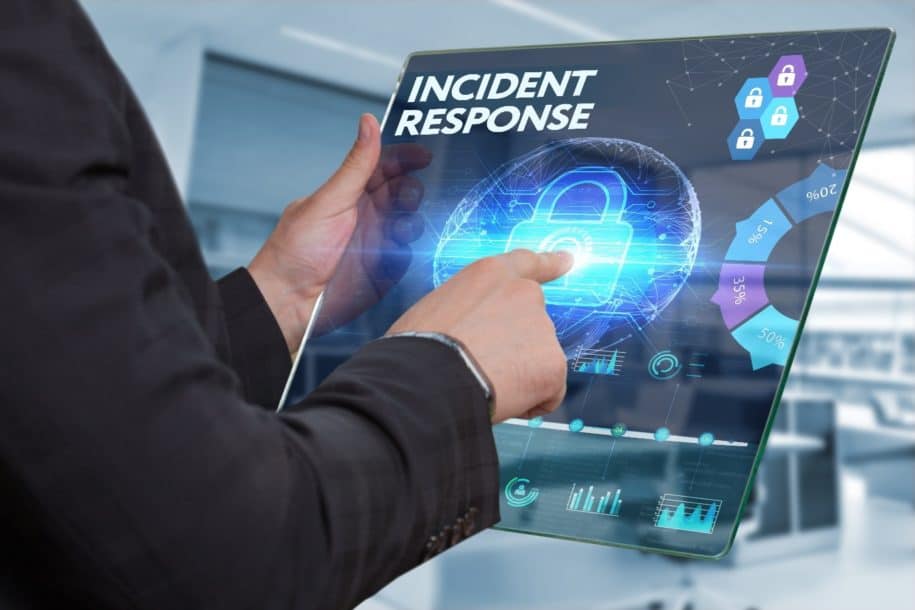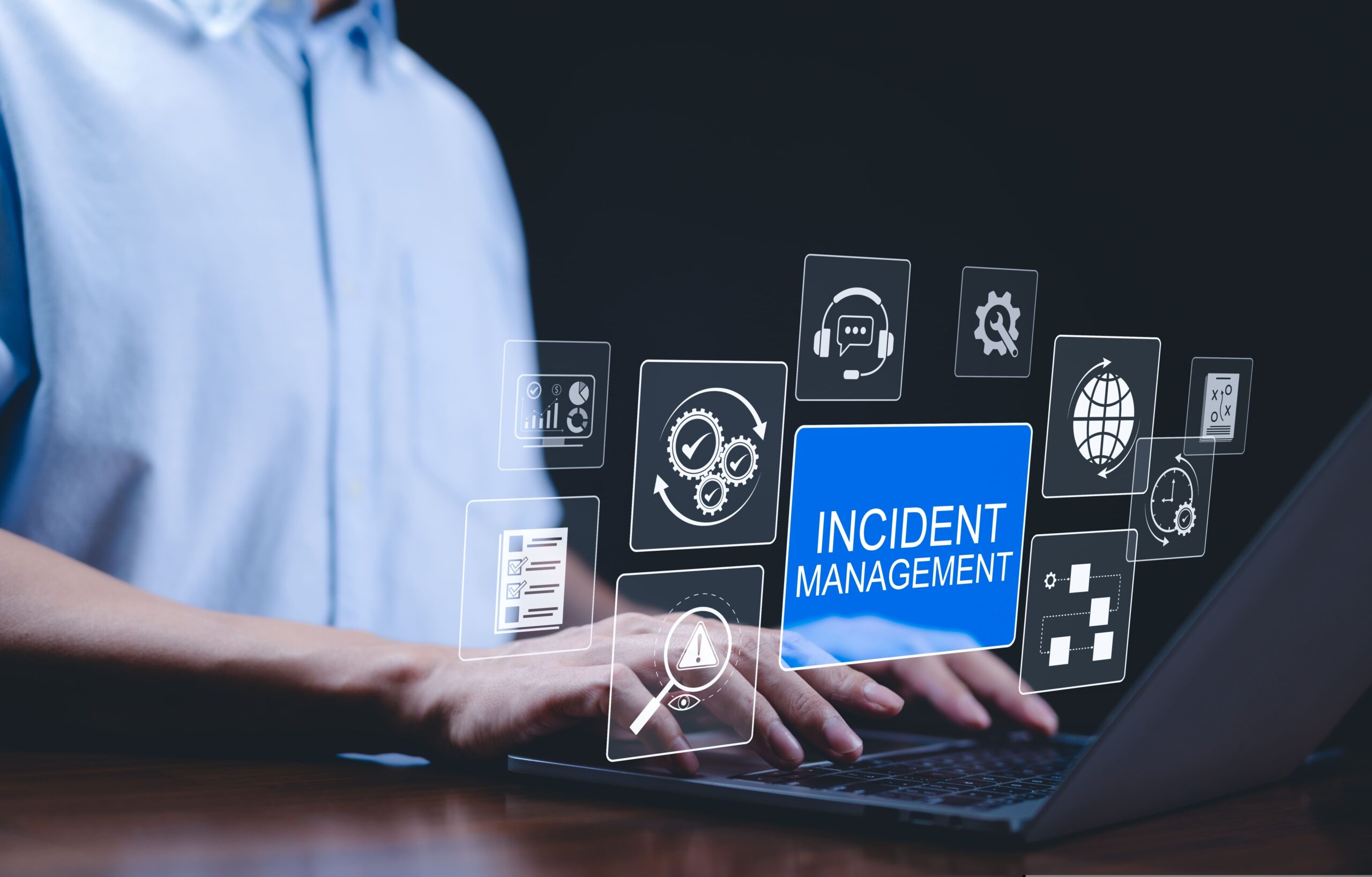System failures, utility shutdowns, equipment malfunctions, human errors—all of these can disrupt an organization’s operations. Accidents can happen, but a company’s established preparedness processes will contribute to any unforeseen event’s overall impact. Have there been efforts to mitigate the potential for consequential risks? Dealing with accidents and other incidents is no simple matter. Many aspects of the business can be affected, and entire teams may be enlisted in working towards a resolution. Is it possible to ensure that nothing crucial has been overlooked? Can an appropriate and timely response be initiated? This is where incident management comes in.
What is incident management and why is it important?
An incident management process is a set of procedures designed to minimize negative impact and ensure the smooth continuation of an organization’s day-to-day services or processes after an unforeseen event. This entails both the longer-term, post-incident processes of creating temporary workarounds, incident reports, and accountability reports, and the immediate tools and steps to be taken for the proper and timely resolution of the incident.
Incident management processes are utilized to restore a company’s services and operations to a desirable standard; however, they also are optimally designed to minimize the negative effects of various incidents, promote continuous improvement, and demonstrate compliance with health and safety requirements. Having an incident management system ensures that productivity, service quality, and workplace safety are always maintained, as it communicates the steps for recording and reporting any incident and initiating the process to appropriately deal with the issue.
Having an incident management process in place can result in the following:
- Quicker incident reporting and resolution.
- Minimized costs or revenue losses.
- More efficient communication during incidents.
To effectively counter operational and productivity disruptions, an incident management system should be consistent, making response time as swift as possible and deterring the possibility of repeat incidents. Achieving sustainable consistency in a company’s incident management process requires engagement and feedback from all employees. This kind of success comes from top-down and bottom-up participation and will eventually result in a more connected and prepared organization.
How companies can create consistency in incident management.
Striving for consistency in a company’s incident management system can be complicated as identification of the facts, discerning what information is relevant, and recovery itself are all complex procedures and heavily dependent on the individual scenario. The following are important aspects in establishing an incident management system that can deliver consistent results, from planning to implementation.
1. Training and Support
Education and training at all company levels are essential to ensure consistency. Training all team members and personnel in incident management improves awareness of possible hazards and the autonomy of all team members to respond. When employees feel ownership over their safety and the safety of those around them (and have support from management and the understanding of how to report such information) issues are more likely to be found before they can lead to an actual incident. This decreases the probability of misreporting, as there is less hesitation from the individuals who experience the problems when they occur and there are fewer channels to go through when addressing issues.
2. Communication
In reporting an incident, speed is often a necessity. Having incident management software with mobile accessibility offers the benefit of more immediate reporting. When workers can use the features available on mobile devices to capture information about incidents, the time it takes to appropriately report (and respond) is shortened. This capability also diminishes the likelihood of human error and misremembering events when some time has passed before the details surrounding an incident are recorded. Whether this technological advantage is harnessed within an organization or not, a company’s incident management process should establish communication channels for incident reporting and incident response. Guidelines on the content and structure of reports should also be introduced so that all employees are aware of what information needs to be shared and why.
3. Automation
When notifications, inspections, exports of compliance reports, and others features that are essential in an incident management process are automated, it enables management to devote less time to administration and more time to ensuring that the gap is diminishing between how work is ideally conducted and how it is actually being carried out day-to-day. Automating the incident reporting process with an incident management software allows companies to submit, track, and analyze incidents quickly and more accurately. As it ensures that all team members use the same tools, steps, communication channels, and processes for incident management, taking advantage of an incident management software is the most efficient way to measure and develop consistency in your safety program.
Developing consistency in any organization takes time, but there are tools and software that can help businesses achieve this end more expediently. Exploring incident management systems and training your team on how to use your chosen platform can result in less disruption to a business’ workflow. Fortunately, the right incident management module can assist in all these important details of managing a successful, ever-improving incident management process.
Author Bio
The SafetyStratus Research Advisory Group (RAG) brings together thought leaders from the global environmental, health, and safety community to promote best practices and provide key insights in the profession and the industries they serve. The Research Advisory Group also advocates, where practical, the intersection of and advances with the use of technology, such as the SafetyStratus enterprise EHS software platform. Group membership consists of representatives from across varied disciplines and market sectors as well as select members of the SafetyStratus team.
The primary objectives of the SafetyStratus RAG partnership are to:
- Build a strategic partnership between EHS practitioners and the SafetyStratus team.
- Provide engaging and practical content to the global EHS community.
- Provide discipline and market feedback specific to SafetyStratus products and services.
While the objectives of the RAG are varied, the primary public-facing outcome will be available through engaging and practical content found on the SafetyStratus resource pages. Various articles, papers, and other valuable resources will be produced and shared as part of an ongoing effort to cultivate a robust community. Ultimately, the SafetyStratus RAG will expand to have a broader reach and provide opportunities for more inclusion by all interested EHS professionals in a collaborative community environment.



